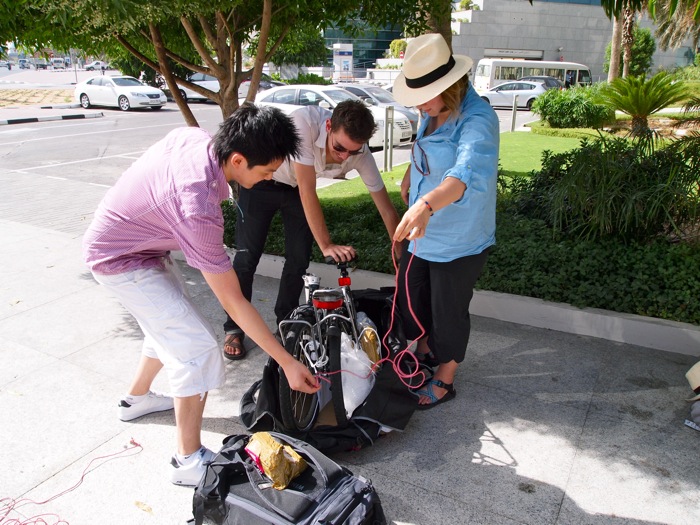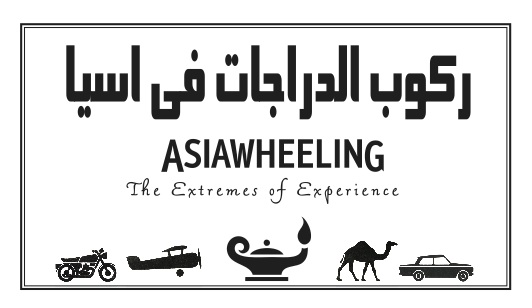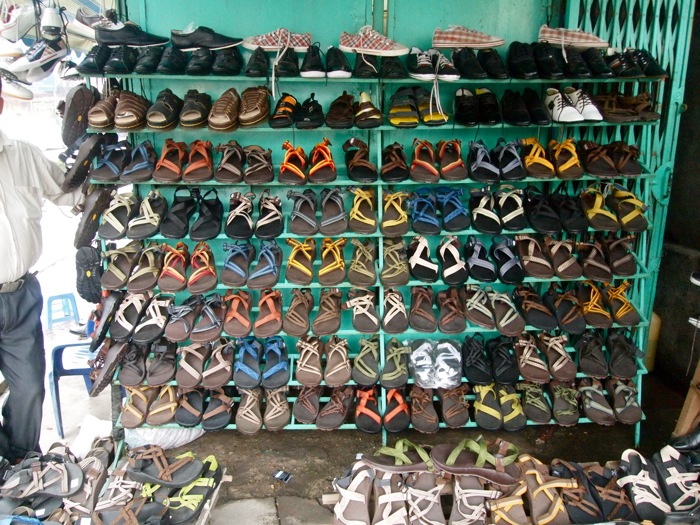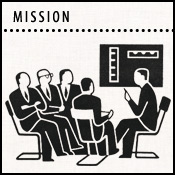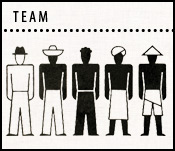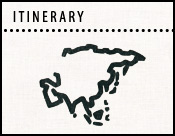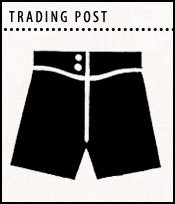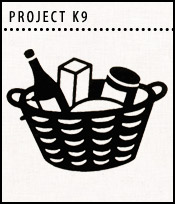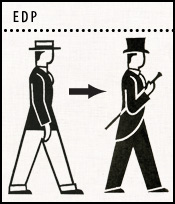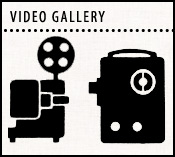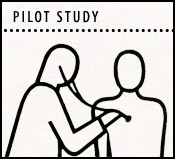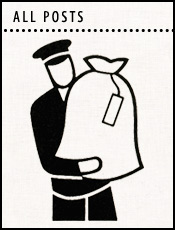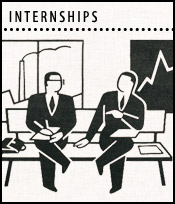August 22nd, 2010
Dawn in Dubai
We had lost a few hours of sleep in the air, so three hours of rest would need to be stretched over what our Dubai-time watches seemed an eight-hour gap.

So, dear reader, you might forgive us for being in a somewhat haggard state upon arrival in Dubai.  We were badly in need of coffee and water, but it seemed that would need to wait. The sun was still not up in Dubai as we followed a crowd of our fellow passengers through a brightly lit, glaringly clean and seemingly brand new airport. Despite this, I knew from the Economist article I had been reading on the plane, that this very airport was scheduled soon to be torn down, renovated, and expanded to serve millions more passengers per day.
Due to its strategic location as a connector between east and west, the Gulf airlines have been expanding and stealing market share of late. And with a seemingly endless appetite for new aircraft and new routes, they showed no sign of stopping.
We looked at one of the many large shiny clocks on the wall (made by Rolex, I dare add). It was about 5:00 am. We took a sparkling staircase that wound around a bank of glass elevators down to an impossibly large hall. The interior design conjured images of the interior of the Istiqlal mosque in Jakarta, with dozens of large sparkling pillars, very high ceilings, and reflective materials attached to every surface. It was immaculately clean and gleamed with wealth.
The passport control officer, clad in the local standard (a white gown known as the dishdash and a white or red headscarf), glared at me from behind the counter. I handed him my passport, and he flicked through it, glaring back at me.
“Who are you meeting in Dubai?†he asked.
“A friend of mine, by the name of Mr. Jackson Fu,†I replied (honestly).
“Where does he live?â€
“London, actually.  He arrives in a few hours. I will meet him.â€
“Hmmm… and what will you be doing in Dubai?â€
“We’ll be meeting with Red Bull UAE, renting a car, and driving to Oman.â€
Bam. He stamped my passport and handed it to me with a shrug. “Welcome.â€
On the other side of passport control, I met back up with Scott and we collected our bags and retrieved the bicycles from the fragile luggage counter. The service people were all clad in the same flowing white robes. All were supremely polite, though they never smiled in all my interactions. We flipped open a laptop and logged onto the free airport wifi, in order to make contact with our West Asia cultural liaison, a Ms Claudia Norton. She had arrived a few hours earlier, and had left instructions as to where to find her, and how to contact her in the form of e-mail. We also were intrigued to discover ourselves cc’d on a great many frantic e-mails concerning her luggage. It seemed, that through a constellation of bungled efforts, Claudia’s luggage had been misplaced in transit, and was currently being re-located and sent to Dubai.
This news was of particular interest to us, as one of the items in her lost luggage was a brand new Dahon Speed D7, which she would be needing for the next month and a half of middle eastern wheeling. In addition, she carried with her a top secret shipment from our friends at Maui Jim: a set of their brand new “Dawn Patrol†models. We had been only able to find a few leaked images of these glasses online, and from what we could tell, they would be incredible. Regardless, we would need to bide our time in Dubai until the luggage and cycle could be located. Only then could we split for the open road, through the desert to Oman.
We used the last bits of credit on our Hong Kong SIM card to touch base with Claudia, and after forming a plan to meet in the city center, we began to prepare ourselves for the wheel into town.
Dubai’s airport is, unlike that of many cities we’ve visited, centrally located. The wheel to the city center did not look far. On the slightly cartoony tourist map we had, it appeared to be a relatively straight shot to the northwest.
Just to be safe, we purchased a SIM card from the du counter. The SIM card was fantastically expensive. At nearly forty dollars, it was more than we had ever paid for a SIM. Talk time was none too cheap either. In just coordinating a meeting place between Ms. Norton and ourselves, we used up half of the initial balance. This country, it seemed, was not going to be cheap.
Outside the glittering, air-conditioned interior of the airport, the sun was rising, and another steaming day was beginning. We dragged our bags out to the curb where a line of taxis patiently waited to take passengers to fantastically expensive, brand new hotels, and unfolded the Speed TRs. The cycles were in perfect shape, devoid of the usual dents and bruises that accompany checking them on an airplane. Â What an airline! I thought to myself. As far as I am concerned, let them steal market share all they like.
The presence of the folding bicycles, of course, attracted the attention of a nearby Dutchman. He walked over to us and addressed us in Dutch. While flattered, we had no idea what he was saying, and soon we switched over to English. It turned out the fellow was an artist, brought here to do a special project in Dubai. He was going to do a project in Curacao, he explained, but Dubai ended up tempting him more. The pleasure was, of course, all ours. And we bid a fond farewell and wheeled off into the sun.
Thank goodness for the Maui Jims. It was already quite bright, and the sun had not even completely risen above the low-lying haze of dust, which helped substantially to soften the blaze. The roads were smooth as silk and brand new. Traffic was light, but it whipped by us in the kind of recently waxed, thundering, streak that can only be found in the Gulf. So far, the drivers gave us plenty of room, and a few even slowed down to gawk at the maniacs who chose to wheel from the Dubai Airport into the city.
We wheeled on past a great many one-story, brand new strip malls, selling all kinds of specialty imported goods. From large format printers, to Zamboni machines, we drove by it all. But where was the city? It was hidden from us behind the haze of dust, perhaps. We continued to follow our compass bells, heading northwest. This took us around the back of the airport, where planes soared only a few hundred feet above us while we wheeled. The roads were giant, truly huge, and most interchanges sported a clover-leaf style of over- and under-passes rather than forcing people to stop at a light.
Eventually, it became clear to us that all was not well in the navigation department. All the landmarks we expected to find were nowhere, and the city was not even visible ahead of us. Just then, as though sensing our predicament, Claudia called. She had arrived at our previously determined meeting spot, a certain Ministry of Culture and Tourism. She described the place as “creepy†and informed us that she was changing locations. Fine by us. We would do our best to arrive shortly.
We asked an Indian fellow on the street, in English, where to find the downtown and he pointed in the opposite direction. We took out our map, and he quickly identified our error. North was not, as it is habitually the world round, up. Rather, the map had been tilted some 53 degrees in the counterclockwise direction, leaving us pretty much dead wrong in our bearing. We thanked the man and headed back down the street. Meanwhile, a few more brand new jumbo jets screeched overhead, so low I felt I could have hit the landing gear if I had a chosen to hurl a sandal skyward.
That was to be the first of many interactions with Indian and Pakistani fellows in this interesting new city. The Emirates themselves number surprisingly few, and are all quite wealthy. Therefore, in order to build this new city out of the sand, a fair bit of labor needed to be imported. A great many of the workers came from the Indian peninsula, Pakistan, and other Desi countries.
With our new bearings, we began to see the misty outlines of a great spire in the distance, and soon a great many other buildings appeared dwarfed beneath it. This spire was, of course, the Burj Dubai, the tallest building in the world, recently renamed the Burj Khalifa. We suspect this had something to do with Dubai’s recent credit problems, and the massive bailout of the Emerates by its large and more well-funded neighbor, Abu Dhabi. Khalifa, of course, refers to the Sheikh Khalifa bin Zayed Al Nahyan.
We had already seen plenty of the Royal team here. Their faces were everywhere, displayed backed by flattering images of the city from space, or an aircraft, looking on sternly in their dishdashes. The Sultan of Abu Dhabi, Sheikh Khalifa bin Zayed Al Nahyan, being always positioned slightly higher than his neighboring counterparts.
Soon, we began to be surrounded by larger, more substantial buildings. We passed a number of Russian fur shops, closed grocery stores, and finally restaurants and hotels. We continued to ask for directions and soon found our way to the meeting spot, or at least what we thought was the meeting spot.
By this point we were explosively thirsty, sapped already of moisture by the plane flight, on which the temptation to drink those tiny bottles of bourbon had done plenty for our spirits, but little for our hydration levels. All the shops had been closed as we rode, so it was with mouths like sandpaper that we called Claudia to report our current position. She seemed to be nearby, but we could not identify a mutually visible landmark.  Eventually we settled on a nearby, giant luxurious Sheraton, which looked out onto a blue canal that cut through the city. “I believe they call this ‘the creek’â€, Scott mentioned.
A passing Indian man grumpily directed us toward a vending machine near the creek, which only sold one thing: tiny bottles of cold water. There was a mild price gouge, but what can a thirsty man in the desert say to change the mind of a cold robotic dispenser?
We sucked down the water and watched the pedestrian traffic go by. It was the labor force of Dubai, on its way to work. Those who worked in offices, of course, sped by in sparkling cars, while the builders, cleaners, and guards walked or rode rusty Hindustan hero bicycles. The water was gone all too soon, and we headed over to the shade of a set of trees, no doubt imported and watered by the Sheraton and waited for Claudia to arrive.
Soon enough a cab pulled up, and out she climbed, wearing her only pair of clothes, and toting her carry-on luggage. We greeted her warmly, and as if sensing through the collective unconscious our reunified momentum, our phone rang with a call from the illustrious Jackson Fu. He was here as well, and was just loading his Speed TR into the back of a cab, curious as to where we should meet.
We had ridden by a particularly interesting Iranian restaurant on our way to the Sheraton, and we figured that might be a good place for breakfast, so we decided to hang out in the shade and wait for the return of the illustrious Mr. Fu.
This happened in remarkably short order. Another cab pulled up and out climbed a grinning Indonesian-Chinese man, his hands still cool to the touch from the air-conditioned cab, looking ready for anything. We helped to unload his bag and his cycle.
It was a Speed TR, much like our own, but one year newer. It sported a slightly more refined system of protection for the planetary transmission, a new rear rack, and like Mr. Fu himself, a generally sleek demeanor.
So excited were we to be in the presence of the one and only, most debonair and illustrious Mr. Fu, that we could not help introducing this new item to the AsiaWheeling trading post: the “Return of the Fu” T-Shirt.
 We all exchanged warm regards, introducing Claudia and Mr. Fu, for their first face-to-face encounter, and unfolded our cycles. We could not wheel, however, due to the absent nature of Claudia’s Speed D7, but we were close. We were four wheelers, soon to united with four Dahons, and there was a whole bunch of Persian Gulf waiting to be explored. But first things first. Coffee and breakfast. We locked our cycles, and dripping with sweat from the walk over, strolled into the freezingly air-conditioned Iranian restaurant. They were, unfortunately, not serving the full menu, but rather than head out on a starved search for sustenance, we settled for the set breakfast of coffee and scrambled eggs. We also were given access to a large table from which we could take our fill of middle eastern flatbread, tomatoes, cucumbers, strange neon pink Halal tinned sausage. We feasted and allowed ourselves to dry slightly. Over this humble Iranian breakfast, we hatched our master plan.
We all exchanged warm regards, introducing Claudia and Mr. Fu, for their first face-to-face encounter, and unfolded our cycles. We could not wheel, however, due to the absent nature of Claudia’s Speed D7, but we were close. We were four wheelers, soon to united with four Dahons, and there was a whole bunch of Persian Gulf waiting to be explored. But first things first. Coffee and breakfast. We locked our cycles, and dripping with sweat from the walk over, strolled into the freezingly air-conditioned Iranian restaurant. They were, unfortunately, not serving the full menu, but rather than head out on a starved search for sustenance, we settled for the set breakfast of coffee and scrambled eggs. We also were given access to a large table from which we could take our fill of middle eastern flatbread, tomatoes, cucumbers, strange neon pink Halal tinned sausage. We feasted and allowed ourselves to dry slightly. Over this humble Iranian breakfast, we hatched our master plan.
And like any great structure, our plan had certain crucial, load-bearing elements. One of these was a fellow by the name of Sid. Sid was a good friend of the illustrious Mr. Fu, and had most graciously offered to host us during our time in Dubai. What we needed was to touch base with this man. It was Saturday in Dubai, and as such the final day of the weekend. So we were in luck. Sid was not at work, but at home, and would be able to receive us.
So it was with little ado that we paid our bill and hailed a van-taxi. Luckily, a great many of the taxis in Dubai are vans, for no smaller vehicle would fit all four of us and all the luggage. The van began to snake its way through the city, one impressive building, followed by another, even more impressing structure.
As I looked around, I found myself commenting internally, and finally externally on the surprisingly tasteful and beautiful nature of these buildings. The architecture of Dubai is certainly unique, sensational even, and it is executed with a certain attention to detail, a certain ratio of dimension, which was quite pleasing. I was so far overwhelmingly impressed.
As we grew closer to our destination, I began to realize that we were heading directly toward the imposing Burj Khalifa, rising in jagged spires, impossibly high above us. Was it possible that the mysterious Sid lived in the shadow of this magnificently chilling spire?
Indeed he did, in a newly finished housing development that contained a number of apartments and a large hotel. The entire development was themed on the old middle eastern clay cities, but studded with large fountains, palm trees, pools and the like.
We pulled up in the cab and Sid sauntered out to meet us, wearing soccer shorts and flip-flops, the epitome of a gentlemen of leisure. He stuck out his hand and with a large smile introduced himself, welcoming us to his home. We looked up at the stunning surroundings, the towering Burj, flanked by the largest fountain in the world, the palm-lined drives, and immediately realized we would be for some time in this gentleman’s debt.
We made our way inside, to find a splendid lobby, sporting a great number of antique looking urns, and up to Sid’s apartment, which was decorated beautifully with a mixture of Indonesian and other exotic relics. He offered us coffee, which he served in a number of delightful, though nondescript tea cups, and one large red souvenir cup with a camel on it. “I got this one here,†he said with a grin.
After having some coffee and connecting to Sid’s most luscious supply of high-speed Internet, we wandered down to the pool for a little dip. It was hot out, and the sun was now blazing in the sky. It was also unexpectedly humid. It’s true that Dubai is a city in the center of a desert, but perhaps due to the presence of the ocean, it is also quite humid.
“This is actually not bad at all for the summer,†Sid explained. “You’re quite lucky.â€
After a dip in the pool, we headed out on foot, across the street to a giant palatial hotel complex. It was gorgeous, truly impressive, sporting an intricate system of fountains and pools. We walked right across the center of the pools, along a little walkway, and as we walked, Sid explained to us about the Burj.
The tower had been designed to be the largest in the world, but during the design and construction project, its original dimensions had been eclipsed by other structures, so it had been refined and heightened mid project. This was in part why it had such a distinctive shape.
Sid continued to lead us through the grounds of this massively luxurious hotel and over a wide bridge, past the largest fountain in the world, and into the largest mall in the world. “In Dubai,†Sid explained, “it either has to be the biggest, or the newest, or the most of some category.â€
And with that we walked into the giant gaping interior of the largest mall in the world, complete with a savagely populated indoor salt water aquarium full of sharks and sea turtles.
We wandered around the mall for a bit, noticing in particular the intensely fashionable sunglasses and purses carried by the women, and the glitzy watches worn by the men.
One reason this emphasis on flashy peripherals is the uniformity of dress. Many of the men wore the dishdash, and an even larger proportion of the women here wore the full hijab. The hijab is generally a dark flowing garment that covers almost all of the body, including much of the head with somewhat obfuscating fabric. With the majority of clothing dictated by religion, peripherals were a chance to show wealth. As far as I’m concerned, however, even the hijabs and dishdashes themselves simply reeked of expense, with barely noticeable but intricate patterns of black on black, or white on white, with tastefully placed folds and cuffs.
We ate in the giant food court.  Though before we settled on a joint, we were sure to take a full circuit, including spending a good few minutes curiously examining the Johnny Rocket’s diner. In the end, we opted for your basic Arabian cafeteria food restaurant.
And with trays piled high with hummus, baba ganouj, tabouli, and other unknown but exciting salads, we enjoyed a meal of astonishing quality and freshness for the “food court” of a mall.

This was, of course, all served with steaming hot flatbread. As we dug into the feast, we realized how hungry we had become since our early morning adventures in Iranian breakfast buffets.
Strolling downstairs, we rounded off the meal with a cup of espresso and some lively conversation.
Strolling back to Sid’s house, we realized that we had been sold on Dubai — or at least were beginning to be sold — and that for all the hype and opulence, Dubai was easy on the eyes and comfortable to stroll around.
That evening, we collapsed exhausted into our beds, sleeping the sleep of one who has traveled many miles and finally found an oasis.






